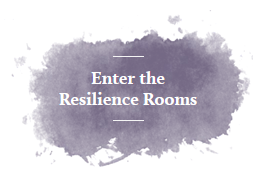Martin Luther King Jr. epitomized a person who tapped into his passion and purpose. He proactively advocated for civil and human rights which resulted in the celebration of his birthday as a day of remembrance and a coveted “day of service.”
Helping children to understand the value of advocacy, compassion and empowerment leads them to greater self-compassion and loving kindness toward others. They acquire greater self-awareness and compassion for the human condition.
The practice of compassion and advocacy in children should be reinforced so that it becomes habitual and instinctual. This stresses the need to teach children these values from very early on so that it becomes innate. It mimics what we do when we teach them about the things we value and want them to value as well. It takes mindful and concerted effort to fortify these values.
How To Teach Compassion And Advocacy To Your Child:
(1) Personally model respectful behavior toward others. Children learn and mimic the behavior of their parents. If it is expected that your child exemplifies compassion and advocacy they must observe that type of behavior from you, their parent, to others and to them personally.
(2) Acts of kindness and care should be an ongoing activity carried out by your child on a daily/weekly basis. Going to a charity function once a year or once every six months is not enough to teach these core values. Otherwise your child will identify or link the charity happening at a certain time or event. For example, if every Thanksgiving your family goes to a soup kitchen to help, your child will view Thanksgiving as a distinct time of helping and will not necessarily transfer the need to help at other times and occasions.
(3) Do caring things that entail projects being carried out from beginning to end so that they can appreciate the process of giving. For example, every Friday have your child take 1/3 (or any other identified amount) from their allowance to put in a charity box. Save that money up for eight weeks and go with them to purchase a toy. Follow-up with bringing them to a children’s hospital or daycare center to donate that toy.
(4) Dr. Deborah Gilboa, a leading parenting expert and author suggests splitting the funds in four ways: save, spend, donate and invest. A percentage of the overall amount can be put aside for each of them. At the end of each month they can select an organization or cause that they feel is meaningful to each of them and donate and learn the value of saving and investing as well.
(5) Empower your child to select causes that they personally feel passionate toward or can relate to. This will enable them to feel ownership that they made the choice and have a personal investment in achieving charitable goals. Involving them instills further motivation, dedication, and desire to help.
For example, when your child has birthday parties, instead of him/her getting a plethora of random gifts which barely gets touched, ask guests to donate a dollar amount of their choice that they are comfortable with. Let them know that a half or third of it, whatever you’re comfortable with, will be donated to a charity that your child selected and is passionate toward and the other half or third will go toward purchasing one memorable gift that your child selects.
(6) Teach your child the value of being empathetic. Make it a point to discuss with them how they feel about various interactions, actions, and circumstances that they are confronted with. Also, ask how they think another person may feel; suggest that they “put themselves in another person’s shoes.” If they are not able to get there independently, make connections for them so that they can internalize how what they say and do makes an incredible impact on others (both for the positive and negative).
With gaining compassion for other individuals it helps to also foster self-compassion and the ability to be sensitive, caring, and compassionate toward one’s self. They are better able to appreciate human frailty, vulnerability, and our basic human needs.
(7) After participating in a volunteer opportunity, review with your child the fundamental responsibility to give back to the community and assisting others in need as a moral, ethical, and personal responsibility. Additionally, initiate conversations about diversity, mutual respect, working with persons of authority and respecting and appreciating difference.
We all have a fundamental responsibility to teach these skills in an impactful and meaningful way. The “intention of doing” is not as powerful or as helpful as the actual “act of doing.” Compassion and advocacy is not inherent; it can be fostered and fortified with meaningful effort.
Blog published Huffington Post.



